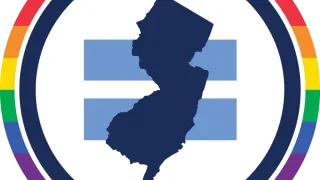
Sep 15
Pope Leo XIV Marvels at His 'Huge Learning Curve' in an Interview Released on His 70th Birthday
Nicole Winfield READ TIME: 3 MIN.
ROME (AP) — Pope Leo XIV marveled at the “huge learning curve” he has taken on as pontiff and likened some aspects of the job to jumping “in on the deep end of the pool very quickly," in excerpts of an interview released Sunday on his 70th birthday.
The pope also lamented widening income gaps between the working class and CEOs, recalling the recent news that Elon Musk could be in line to become the world's first trillionaire.
“If that is the only thing that has value anymore, then we’re in big trouble," Leo said in the comments, the pope's first interview as history’s first American pope.
The comments came just a day after Musk's brother's company, Nova Sky Stories, staged a light show over the Vatican featuring 3,000 drones depicting images from the Sistine Chapel and even Pope Francis' face.
The interview was conducted this summer by Vatican correspondent Elise Ann Allen for her forthcoming biography of Leo. Excerpts were published Sunday on Allen’s Catholic news site Crux, and in the El Comercio daily of Peru.
In the excerpts, Leo spoke about feeling both American and Peruvian, given his dual citizenship and 20 years of missionary experience in Peru. He said that experience gave him great appreciation of the Latin American church and Pope Francis' ministry as history's first South American pope.
Asked whether he would root for the U.S. or Peru in a future World Cup, Leo drew parallels to his childhood in Chicago and the value of not shutting down opponents.
“Even at home, I grew up a White Sox fan, but my mother was a Cubs fan, so you couldn’t be one of those fans that shut out the other side,” he said. “We learned, even in sports, to have an open, dialogical, friendly and not angry competitive stance on things like that, because we might not have gotten dinner had we been!”
Francis promoted Leo to a top job at the Vatican in 2023, making clear he viewed him as a potential successor. Nevertheless Leo said he wasn’t fully prepared for the job.
“There’s still a huge learning curve ahead of me,” he said, adding that he had found his footing as pastor, but that the challenge was the job as world leader.
“On that one I had to jump in on the deep end of the pool very quickly,” he said.
Leo's 70th birthday is celebrated at the Vatican
The interview was released Sunday as Leo marked his 70th birthday, which was celebrated at the Vatican during his traditional noon blessing.
Leo saw giant “Happy birthday” banners, in English, Italian and Spanish, balloons and congratulatory signs held up by the faithful gathered in St. Peter’s Square. Groups of Peruvian believers, including dancers in traditional attire, were out in force.
“Dear friends, it seems you know today I have turned 70,” Leo said to cheers. “I thank the Lord, my parents and all those who remembered me in their prayers.”
When he was elected last May at age 69, the former Robert Prevost was the youngest pope since 1978, when Karol Wojtyla was elected Pope John Paul II at age 58.
Many people in the square knew it was Leo's birthday and wished him well, especially given the weight of responsibility he had taken on to run the Catholic Church.
“Well, he definitely needs a lot of support, because he has to carry on a pontificate during a particularly difficult period, both for geopolitical issues and certainly for internal matters," said Lorenzo Vecchio, a member of a Catholic university group in the piazza. “We are certainly happy that he is a very young pope.”
___
Associated Press video journalist Paolo Santalucia in Vatican City contributed to this report.
___
Associated Press religion coverage receives support through the AP’s collaboration with The Conversation US, with funding from Lilly Endowment Inc. The AP is solely responsible for this content.






